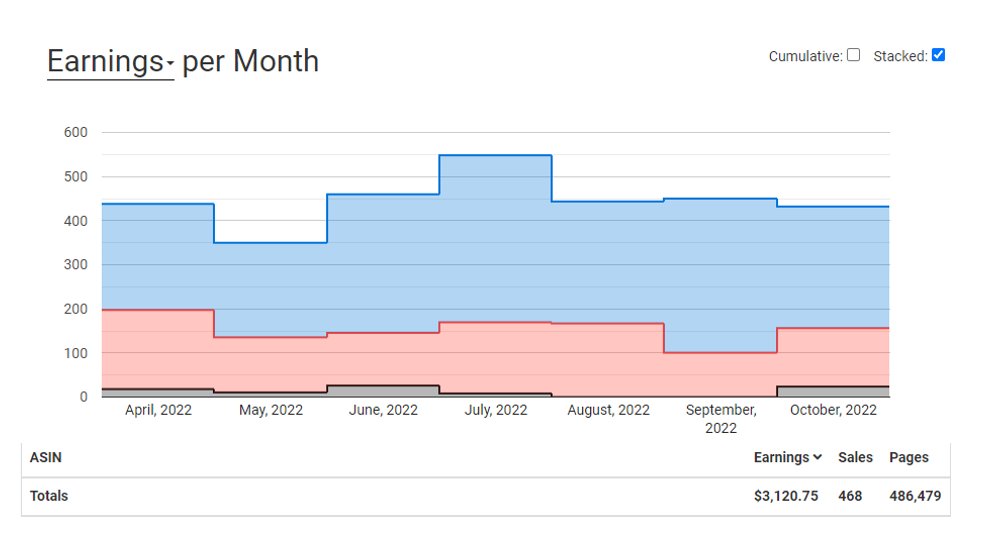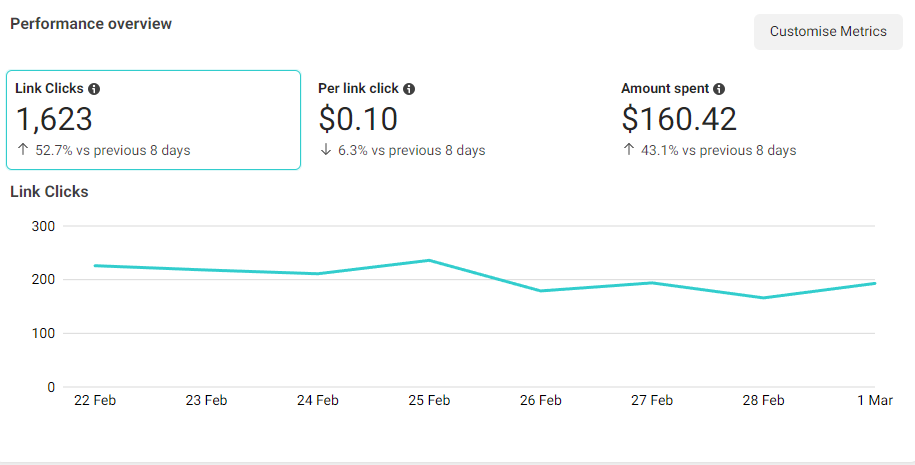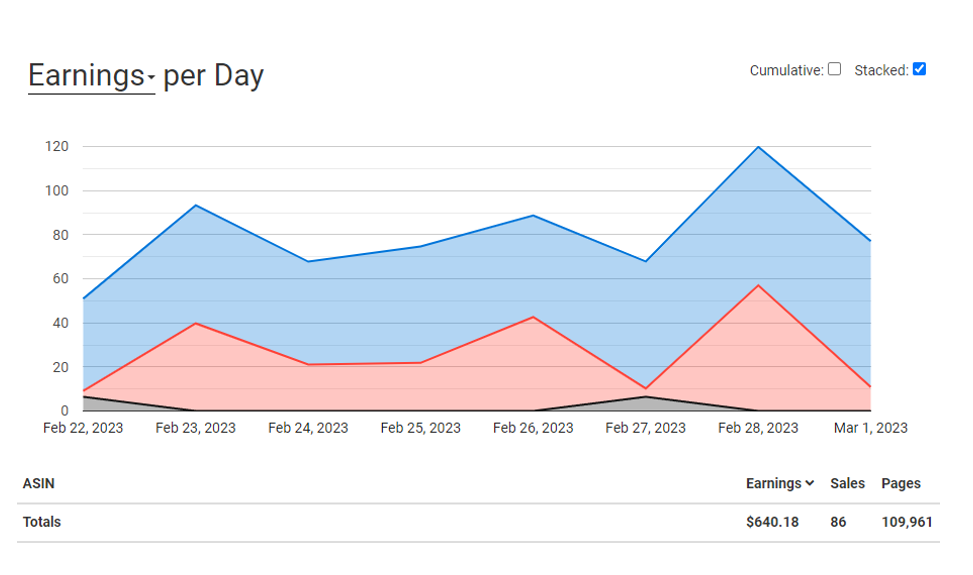How accurate are Attribution Tags in tracking book income?
Ever since the introduction of Amazon’s Attribution Tags, authors have been able to track the book income resulting from their advertising and promotional campaigns to a level not seen before. This is incredibly useful for determining the value of these campaigns and planning strategies around then. But how accurate are they?
In terms of tracking the sales that come directly as a result of a click from one of your attribution links, they’re very accurate, but that doesn’t actually tell the whole story. Even when the only promotion you’re doing is running a campaign with a tracked URL, you may very likely see more sales than are actually being reported.
To demonstrate the issue and explain what’s going on, Ginger takes us through an example using an ad campaign he recently ran on one of his own books, complete with all the sales and page read numbers.
I’ve been writing a whole lot recently about Amazon Attribution Tags, and not without good reason. They’re one of the most exciting new developments in the self-publishing industry and they’re going to change the game for a lot of authors (in a good way.)
But nothing is perfect – and while Amazon Attribution Tags are a fantastic way to track your profits, they’re not infallible. Depending on your advertising strategy, there is a very real possibility that they don’t track every sale or page read your books receive – although the good news is that this is a fallibility that only seems to work one way.
Attribution Tags never overreport sales and page reads attributed to your advertising (so they won’t be telling you that you sold more books than you actually did.) They can only ever underreport sales and page reads (meaning in your worst-case-scenario, you’ll be making more money than they’d actually reported.)
You don’t need to take my word for it. In fact, the purpose of this article is to provide a demonstration of how Attribution Tags underreport total sales, and give you a method with which you can guesstimate by how much. This isn’t to say that the tags are broken in any way, there are just certain things they can’t track. But it’s for a good reason, as you’ll see.
That’s why I still stand by what I said in this article – that you should use only Attribution Tag figures when developing your advertising strategy, not any additional guesswork. Better to base your actions on what you can reliably predict and measure, and if you get an extra boost on top, even better.
Step One: Establish a baseline
When you’re trying to work out the effectiveness of your advertising, the first step is to set a universal baseline to level the playing field. I have some great information to work with, since I’d been locked out of Facebook last year and hadn’t started advertising again until recently. Therefore I had six months of “clean” data which demonstrated how much money my books would make me even if I didn’t advertise them at all. That information looked like this:

Sales will always fluctuate over time, but if you can take a spread of information to even those peaks and valleys out, you’ll be able to establish an “average” earnings period for your books even when you don’t advertise.
For me? I took the total of this period – $3,120.75 in royalties, 468 sales, and 486,479 page reads – and divided it by 26 to work out what the weekly average was. That ended up being $120.02 in royalties per week, 18 sales a week, and 18,711 page reads per week.
It’s not an exact science, but if you can find a more accurate method, let me know.
This gives us the baseline information to work out how much more (or less) money our advertising is bringing in.
Step Two: Set your timeframe
Now we’ve set a baseline with which to compare our sales figures, we need to decide on a specific time period to measure, and use that when comparing all the figures we have access to.
Having worked out a week-long baseline, we’ll measure a week of performance so that the figures align. In my example, I’ll use the period Thursday, February 22, 2023 to Wednesday, March 1, 2023. That’s a full week of data, but just far back enough to ensure that Amazon’s Attribution Tag data has filled in all the sales and page reads for that period (remember, it can take 72 hours for all of that information to filter in.)
If you’re advertising books in Kindle Unlimited, that will mean data from books borrowed prior to February 22 will be included – but likewise, potential income following March 1 won’t be counted, so as long as your overall budget and delivery hasn’t changed for a few days before and after this measurement period. It’s not 100% accurate, but this will be the best way you have to calculate reasonably accurate KDP Select page read information.
Using Feb 23 to Mar 1 as my timeframe, I collected the data.
First, I went to Facebook and gleaned this information from my campaign.

Then, from my Advertising on Amazon dashboard, I gathered this information from the same period.

Finally, I used Book Report to help gather information from my KDP dashboard spanning the same period. Now, you can just go to kdp.amazon.com to find this information, but I pay for Book Report because I find it provides a more useful at-a-glance overview of the information I need.

This information helped me establish the following:
From Feb 22, 2023 to March 1, 2023 I spent $160.42 on Facebook advertising, which generated 1,623 clicks to my book’s product page on Amazon.
For some reason, Amazon registered 1,786 clicks to the books product page from Facebook (which might include crawling by Facebook’s systems.) Those clicks led to 2,664 DPV clicks on the product page of my book. That, in turn, generated 47 book sales and $187.53 in book sale royalties, plus 59,704 page reads which generated $253.53 in Kindle Unlimited royalties.
Finally, I was able to log 86 book sales on my KDP dashboard, and 109,961 page reads, generating a cumulative $640.18 in royalties.
With this information logged, we can move onto the next part of the process.
Step Three: Doing some math
Thanks to my self-publishing career, I’ve found myself doing all that math I never thought I’d find useful at school. Specifically, I used it to work out two things:
Firstly, how much money my Attribution Tag told me I was making. It had logged 47 book sales generating $187.53 in royalties. Knowing that I was only getting 70% of that income (more or less, accounting for paperback sales) it meant I was making about $131.27 in actual revenue. Add that to the $253.53 in Kindle Unlimited royalties and this week saw my Attribution Tag log $384.80 in total royalties attributed to my advertising.
Meanwhile, I used the information from my baseline to work out how much this advertising had moved the needle overall when it came to my book sales.
From Feb 22 to Mar 1, I had sold 86 books. Normally, I’d sell 18 books. Therefore, my advertising had (probably) generated an additional 68 books sales.
During that same period, I’d generated 109,961 page reads. Normally, I’d generate about 18,711. Therefore, it was a safe guess that my advertising has generated 91,250 additional page reads – which calculates to about $456.25 in Kindle Unlimited royalties at an estimated rate of $0.005 per page.
Overall, I’d generated $640.18 in royalties. In an average week, I’d generate $120.02. Therefore my advertising had generated an additional $520.16 in royalties compared to my baseline.
But this is where the confusion comes in – because my Attribution Tags had only measured $384.80 in royalties, whereas my weekly sales had actually increased by $520.16 in royalties.
Subtracting the $160.42 I’d spend on advertising resulted in my Attribution Tags measuring $224.38 in profits, whereas my overall boost in sales suggested $359.74 in profits.
Which figure is right?
Perhaps they both are.
How Selling More Books Sells More Books
The dilemma we’ve stumbled across is how Attribution Tags log the sales generated directly by your advertising, but not the sales generated indirectly by your advertising – and the more successful your advertising is, the more successful your book sales are going to be overall.
In my example, I’d seen a boost in profits of $359.74 during this period, even though my Attribution Tags were only measuring $224.38 in book sales. During this week, I’d somehow had a boost of $135.36 that my Attribution Tags weren’t claiming credit for. Where did they come from?
Well, the answer could be: A lot of places.
My advertising had driven my book from 153,567 in Amazon’s ranks to within the top 5,000 books, and in the Top 20 of three different categories. Suddenly, my book was getting a lot more organic visibility – and that no doubt generated a lot of additional sales.
Likewise, Amazon started recommending my book to more people because it was suddenly getting a lot more sales. This meant more profit for me, even though it had nothing (directly) to do with my advertising.
There could be other reasons, too – like people remembering my book and then clicking on it again the next time they visited Amazon. There were all sorts of reasons why my Attribution Tags were unable to track the boost in sales my advertising had driven, but it didn’t stop them being legitimate.
Ultimately, the explanation is simple: The more books you sell, the more books you sell. When your advertising works, it works even better than expected.
So, what does this mean?
It’s enormously gratifying to learn that your advertising is even more successful that you’d have known if you’d judged only by your Amazon dashboard, but because this boost is impossible to fully attribute, you shouldn’t get too excited about it. When I’m planning the next stage of my Facebook advertising, I’ve been playing it safe and using the figures my Attribution Tag provides me to calculate my advertising budget.
I know I’m making more than that – but because I can’t measure that amount exactly, I prefer not to concern myself with it. Boosts in profit are always welcome, but I need cold, hard data to develop effective advertising strategies.
It is worth knowing about, however – since it might mean even unprofitable advertising campaigns are closer to breaking even than you might think. Attribution Tags provide authors with incredibly valuable information with which to build a successful self-publishing career, but it never hurts to remember that you’re always going to be making just a little bit more money than they tell you.











I agree with you that attribution is a game changer for advertising. Time and again I am finding ads I would have thought were “winners” based on CPC and CTR aren’t converting nearly as well as some with slightly high CPC and CTR. Over the last two months of using attribution tags on all ads, I am seeing profit margins/ROAS rise.
I have a question for you though – have you used attribution on international ads? I believe you are in CA, so international obviously has a varying meaning. But, I’m US, and am having a very hard time getting my attribution for UK ads to work. I’ve tried ensuring my links work…but I’m not showing any clicks AT ALL for UK. Meanwhile, ads in the same campaign but a different ad set for Canada, do show clicks. Are there potentially longer delays for international ads? I can’t figure out what I’m doing wrong in UK…my links for Amazon go to the UK amazon landing page. Any thoughts or suggestions? Do you have ads with attribution targets to UK?
My sales and page reads were flat until I started running Facebook ads with attribution tags. But I do think everything is being underreported. However there’s no way to know if other factors are at play like backmatter and a newsletter exchange I’m currently involved in.